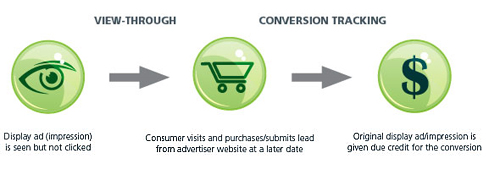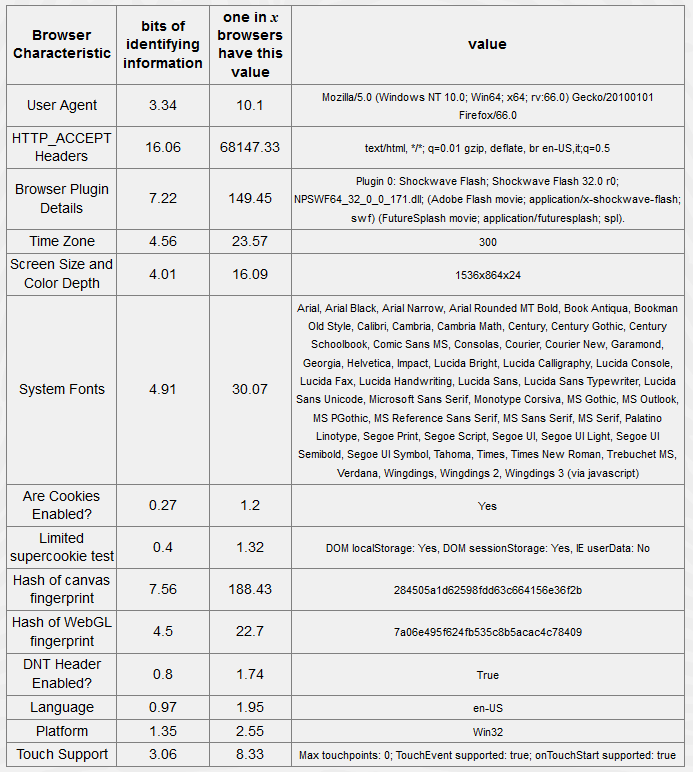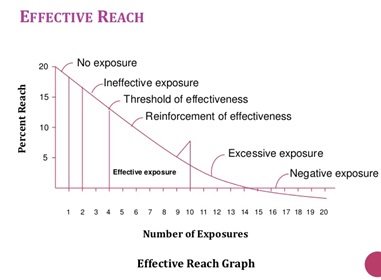In case you haven’t noticed, digital marketing performance is more important than ever. With advertiser’s increasing need for accountability and measurement tools evolving to meet that need, there is major and growing interest in associated ad analytics or adverlytics. More specifically, display viewability measurement and attribution are hot topics. Yet, before the explosion in ad viewability technologies and an enthusiastic trade group response to standardize (IAB, MRC), viewthrough remains complicated and mysterious.
Even among experienced digital marketers, agencies and analytics professionals, there is often confusion around these terms with many people using the terms wrong or inter-changeably. They each describe important steps in the digital advertising funnel with viewability an important first step towards measuring exposure and viewthrough gauging post-exposure latent response. It makes a lot of sense to use these tracking methods together.
Viewthrough Defined
Display viewthrough measurement has been around since the late 90s and the advent of agency or
3rd party ad serving (3PAS). That means an advertiser’s digital media agency centrally manages the serving of their display ad campaign across multiple Web sites and/or ad networks. Typical tools used for this purpose include Sizmek, Pointroll, Google DoubleClick and Atlas. The beauty of this approach is having one report that consolidates one or multiple campaign performance metrics across multiple media vendors. The advertiser-centric approach and even allows for performance analysis by placement, ad size or creative treatment across media vendors. Prior to this, agencies had to collect the reports from each media vendor and doing cross-dimension analysis required advanced Excel manipulation. Included in the consolidated report was usually impressions, clicks, media cost a calculated click rate and effective CPM (cost per thousand). Potentially average frequency of ad delivery could also be reported.
How Viewthrough Works
As a more advanced option, the ad server could generate a special beacon tag which could be coded on an important digital event on the client’s Web site, e.g. a visit to the home page, playing a game, initiating a particular download and most obviously the rendering of an order thank you page. The latter being a revenue-generating conversion. The way it works is simple enough: the ad server site code that is placed is page-specific and named in a certain way with a certain ID. When that beacon tag fires, the ad server increments the count for that specific ad. The ad server uses clicker cookies to distinguish between clickthrough conversions and viewthrough conversions by the presence of a click cookie that is served to the browser if they click an ad. Generally, a viewthrough can be simply a visit to the target site or it can be an actual ecommerce conversion.
Fig 1. Viewthrough Process
In practice this meant that digital advertisers were no longer limited to the more direct-response oriented clickthrough rate for measuring display campaign performance. With viewthrough they could also analyze the passive impact of display which is more difficult to measure since it is not immediate and is harder to measure than clickthroughs which use appended query string parameters in the landing page clickthrough URL. That said, viewthrough measurement from the ad server is not enough as unscrupulous ad networks learned to do what is called cookie-stuffing to take advantage of affiliate advertising systems.
Site Analytics Technology Matters
Going beyond simplistic, ad server viewthrough measurement is not easy for digital marketers and technology choices matter. The complexities of generating and managing ad server site tags has also made ubiquitous measurement operationally difficult. What’s more ad server counting of viewthrough was an afterthought. The solution to better viewthrough measurement is ingesting ad server data into the site analytics system where site taxonomy, visitor uniqueness, multiple marketing channels and event level tracking infrastructure already exists. Another option are the better algorithmic attribution systems; a couple even integrate display viewability into their solution (ideal).
The reality is that there is are a few site analytics platforms that integrate with the ad servers in the market today. All are not created equal, not independent of media and there are significant differences in the methodologies. The integrations can be complex but well worth it for advertisers spending more than $10MM per year in display media. However, the learnings are significant when it comes to understanding customer’s digital path to the target Web sites and the latent effects of display ads (banner/video/mobile).
Last, a word of caution: the best way to really understand display media from a viewthrough standpoint is through periodic incrementality analysis, i.e. test and control.
Viewability Defined
Display viewability is a newer capability for digital marketers that has really caught on over the last five years. Essentially, display viewability leverages Web technology that can determine how much of an ad is “in view” of the user’s browser window and for how long. While there is some additional complexity involved, simply put this offers a way for digital advertisers to really understand the quality of the ad inventory that they are buying from Web publishers and ad networks.
Fig 2. Viewability Process
Industry Reaction to Measuring Ad Viewability
Not surprisingly, ad viewability has met with resistance from publishers and even media agencies though it is of obvious interest to advertisers. By better managing viewability, advertisers can ensure they maximize the value of their display spend in terms of both raising awareness and driving a measureable response (clickthrough, viewthrough, engagement, conversions). Unlike viewthrough which languished for years as somewhat of a stepchild metric, The Internet Advertising Bureau (IAB) and the Media Ratings Council (MRC) stepped in early on viewability to create some early standards: 50% or more of an ad for at least 1 second. Advertisers can certainly raise the bar here but there is at least a baseline.
Ad viewability is fairly easy to implement on a display campaign but can often be challenging to operationally integrate into media performance reporting. As a best practice, having an independent analytics team pilot test and benchmark current performance will help gauge how much upside potential there might be.
Rising Tide Lifts All Ships
It stands to reason that you cannot have a clickthrough without an ad first being viewable. If an advertiser were to increase their ad viewability rate from 50% to 75% that would likely mean the number of clicks and therefore clickthrough rate should increase. Similarly, you cannot have legitimate viewthrough without an ad first being viewable. Increasing ad viewability rates should also benefit viewthrough rates as well.
- Viewthrough – It’s all about response measurement. Advertisers ultimately should be very keen on measuring viewthrough from display media if they are interested in Web site engagement and even more so if an online conversion is possible (offline measurement is also possible).
- Viewability– Think front-end of the advertising process, i.e. the inputs. The focus is on doing what branding has always sought to do through media campaigns: create an impression, influence behavior or change preferences.
As you can see, while they are certainly related viewthrough and viewability are very different. Measuring and optimizing viewability should be a self-evident way to improve those front-end metrics that will likely also boosts downstream ones. Viewability and viewthrough can and should work together.










